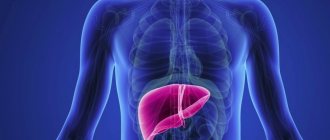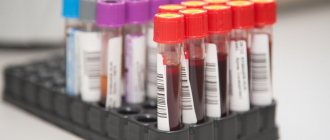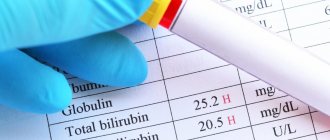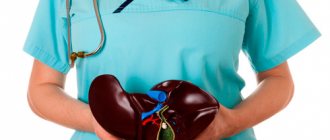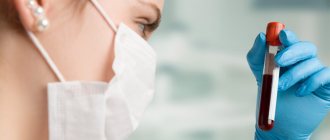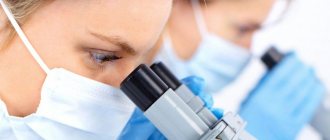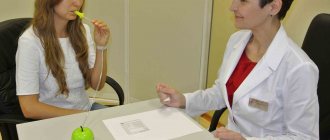Hyperbilirubinemia (HBN) is not an independent disease, but a laboratory syndrome that occurs in many nosological forms. Bilirubin is a yellow pigment that is formed from hemoglobin in red blood cells that have been destroyed by the reticuloendothelial system (splenic sinusoids). It is then metabolized by the liver and excreted in bile. Its increase confirms the presence of true jaundice in the patient. Determining the concentration of bilirubin fractions (unconjugated, conjugated) helps in establishing the origin of jaundice (prehepatic, hepatic, subhepatic).
What is bilirubin, meaning
The content of the article
The bilirubin molecule consists of 4 pyrrole rings connected to each other. The molecular weight of the molecule is 548.68. Pure bilirubin is a sparingly soluble crystalline substance.
Being a breakdown product of red blood cells, bilirubin is toxic. Its indirect form is constantly formed in tissues and blood and is not excreted from the body. The liver processes the toxic substance and converts it into a direct form that is soluble in water. The direct form is excreted in feces or urine, turning them brown.
Of great importance in diagnosis is the study of the relationship between bilirubin levels in the blood, urine and feces. Even if a blood test shows total bilirubin is normal, but the absolute values and the ratio of pigment fractions have deviations, a differential diagnosis of the disease should be made.
The sum of the fractions can give an overall normal value of total bilirubin, but it often happens that primary bilirubin is elevated and conjugated bilirubin is below normal. This fractional ratio is observed in the initial forms of liver enzyme deficiency and the threat of excessive accumulation of toxic indirect bilirubin in the tissues.
Pathogenesis
Features of the pathogenesis (mechanisms of occurrence) of hyperbilirubinemia are determined by the cause. Free (indirect, unconjugated) bilirubin is poorly soluble in water, but has high lipophilicity, i.e. soluble in fats. Therefore, it can interact with phospholipids of cell membranes, especially brain cells, due to which it penetrates the blood-brain barrier, where it uncouples the processes of oxidative phosphorylation and reduces ATP synthesis.
This explains the toxicity of free bilirubin to cells of the nervous system. This is most pronounced in newborns. Bilirubin can color the skin, visible mucous membranes, urine, and feces a characteristic yellow or dark brown color. With prolonged cholestasis, which causes an increase in the concentration of conjugated bilirubin, catabolism and cholesterol excretion may be impaired, which leads to its accumulation in the blood and the progression of atherosclerosis.
Bilirubin norms by age
| Type of bilirubin | Children: first 3 days after birth, µmol/l | Children: from 3 to 6 days of life, µmol/l | Children: over 1 month, µmol/l | Adults, µmol/l |
| General | 24 — 190 | 28 — 210 | 3,5 — 20,4 | 8 — 20,5 |
| Straight | 0,5 — 10,2 | 1 — 12,4 | 0 — 5,1 | 0 — 5,1 |
| Indirect | 23,5 — 179,8 | 27 — 197,6 | Up to 16.5 | Up to 16.5 |
Nutrition to normalize bilirubin
To normalize bilirubin levels, men are advised to exclude salt from their diet and reduce the amount of meat and bread. Doctors also do not recommend eating the following foods:
- mushrooms;
- mayonnaise, mustard;
- lemon, onion;
- smoked products, sausages;
- seafood;
- canned foods;
- alcohol;
- products containing dyes or sweeteners.
You should eat small meals; you should not eat fast foods. Doctors recommend drinking more fluid - up to 2.5 liters per day. This includes not only water, but also green tea and unsweetened compotes.
List of allowed foods and dishes to normalize bilirubin levels:
- cottage cheese, milk;
- non-acidic fruits;
- chicken and quail meat, rabbit meat;
- soups with vegetable broth or milk;
- herbal infusions.
Traditional medicine recommends drinking beet juice, decoctions of various herbs, and motherwort.
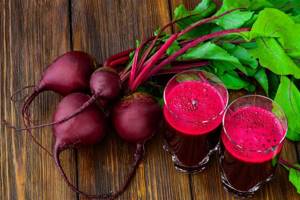
Blood test for bilirubin
The outcome of treatment for any disease largely depends on the accuracy of the diagnosis. Quite often, the doctor has to carry out differentiated diagnostics, analyzing the indicators of laboratory, instrumental and instrumental studies, since different diseases may have similar symptoms.
First of all, the doctor focuses on a biochemical blood test due to the universality of the characteristics of this complex test. Among the basic indicators, one of the most important is the content of bilirubin in the blood, which assesses the functioning of the liver, pancreas and gall bladder. The special significance of the “bilirubin” indicator and its relationship with other blood characteristics will be confirmed by any medical forum with numerous questions on this topic.
Increased bilirubin in the blood - what does it mean?
If the test results indicate an increase in bilirubin in the blood, this may indicate the presence of serious diseases and pathological conditions:
- hereditary or caused by other diseases liver enzyme deficiency;
- liver cirrhosis and hepatitis;
- diseases of the biliary tract and gallbladder;
- hemolytic anemia;
- cancer or metastases to the liver from other organs;
- vitamin deficiency B12;
- injuries with multiple hematomas.
An exception is infant physiological jaundice, which occurs due to the restructuring of the newborn’s body after intrauterine development. In all other cases, it is necessary to determine the exact cause of high bilirubin levels.
It is not always possible to identify the true disease based on one indicator, so the doctor compares the values of different indicators, obtaining more detailed information about the pathological process.
Prognosis and prevention
The prognosis and life expectancy for hyperbilirubinemia is determined by the cause, i.e. main disease. For example, hemolytic disease of newborns, viral hepatitis B, C, and some forms of hemolytic anemia (hemoglobinopathies) are characterized by a high incidence of death. Benign hyperbilirubinemia and chronic cholecystitis, on the contrary, have a favorable prognosis and do not affect life expectancy in any way.
To prevent hyperbilirubinemia, you should limit the consumption of alcohol and fatty foods. For Rh-negative pregnant women, anti-Rhesus immunoglobulin (anti-D immunoglobulin) is administered to prevent the development of HDN.
How is bilirubin related to other blood parameters?
Bilirubin and hemoglobin
. Hemoglobin and bilirubin are substances connected by a single chain of chemical reactions, which increases interest in comparing their values in blood tests and serves as additional information in diagnosing diseases. Hemoglobin breaks down during the process of red blood cell renewal into globin chains and heme, which is converted by enzymes into toxic indirect bilirubin.
Therefore, high levels of hemoglobin and bilirubin indicate hemolytic anemia or injuries with contusions and bruises with a large number of destroyed red blood cells. If low hemoglobin and high unconjugated bilirubin are observed, then the pathology may be associated with a lack of albumin, which is responsible for moving the yellow pigment to the liver.
Bilirubin and cholesterol
. Increased cholesterol and bilirubin may indicate an incorrect dietary pattern, as a result of which the biliary system suffers, and fatty liver hepatosis is possible. As a rule, such a diagnosis is clarified after considering bile pigment fractions, other indicators from a detailed biochemical blood test, and ultrasound of the abdominal organs.
Causes of urobilinogenuria
Urobilinogens are derivatives of bilirubin. Their detection in urine is considered an important diagnostic tool. The presence of urobilinogens in urine can occur with increased destruction of red blood cells (hemolytic conditions), lesions of the liver parenchyma, and increased reabsorption in the distal colon.
In viral hepatitis, urobilinogenuria reaches maximum values at the onset of the disease, then gradually decreases and is practically undetectable during the height of the disease and increases again during recovery. Diseases in which urobilinogenuria occurs:
- Diseases accompanied by hemolysis
: hemolytic anemia, hemoglobinopathies, conditions after blood transfusions. - Liver diseases
: viral, toxic hepatitis, liver cancer. - Intestinal diseases
: enterocolitis, prolonged constipation, intestinal obstruction.
Urine tests for bilirubin: bilirubinuria
In healthy people, the urine of the bile pigment bilirubin may be contained in small quantities and is not determined by standard laboratory methods. Therefore, the norm of bilirubin in urine is
is the absence of bile pigment.
Increased bilirubin in urine
In various diseases, direct and indirect bilirubin fractions can be detected in urine samples. This condition is called bilirubinuria.
Indirect bilirubin appears if its content in the blood significantly exceeds the norm and at the same time the permeability of the glomerular membrane is increased. This occurs in the following diseases:
- glomerulonephritis of various etiologies.
- Ga nephropathy (Berger disease)
- systemic lupus erythematosus;
- Henoch-Schönlein purple
- periarteritis nodosa;
- hemolytic-uremic syndrome (HUS);
- idiopathic thrombocytopenic purpura (ITP).
The cause of increased direct bilirubin in urine is jaundice. A positive reaction is detected already in cases where the bilirubin content in the blood is within 30–
34 µmol/l. This indicates a violation of the excretion of bile into the duodenum and an excess of bilirubin in the plasma in adults and children. If the general blood test for bilirubin is normal, there will be no this pigment in the urine.
The presence and absence of this bile pigment in urine in various forms of hepatitis is shown in the table:
| Type of jaundice | Try |
| Normal (healthy person) | Negative |
| Hemolytic | Negative |
| Parenchymatous, at the onset of the disease | Weakly positive |
| Parenchymatous, at the height of the disease | Strongly positive |
| Parenchymatous, in the recovery stage | Weakly positive |
| Obstructive | Positive |
How are tests done for bilirubinuria?
To determine bilirubin in urine, special tests are performed:
Gmelin's test (Rosenbach's modification) is carried out as follows: add 1-2 drops of acetic acid to 100–150 ml of urine and filter the solution several times through a paper filter. After this, the wet filter is left on the Petri dish to dry, after which a drop of a mixture of nitrous and nitric acids is applied to its surface. Increased bilirubin in the urine causes the paper to stain in the form of multi-colored concentric rings, including green, blue, purple, red on the outside and yellow in the center. Without the presence of a green ring, the sample is considered negative.
Rosin's test is carried out by adding a few drops of a 1% alcohol solution of iodine or Lugol's solution to 9–10 ml of urine taken for research. If there are bilirubin fractions in the sample, a persistent, noticeable green ring forms at the liquid interface.
To determine the amount of direct bilirubin fraction, a screening test on standard strips is also used. The level of content of this pigment is determined after applying urine to it and assessing the resulting color using the attached scale.
Testing your urine for the presence of this liver enzyme provides excellent opportunities to:
- for early detection of hepatitis and differential diagnosis of various types of jaundice;
- to determine the effectiveness of treatment in the treatment of many liver diseases;
- in the diagnosis of kidney pathologies accompanied by an increase in the permeability of the glomerular membrane;
- to monitor the presence of pigment in urine during pregnancy and preventive examination of persons working with harmful substances;
- as a quick test for liver condition in patients taking drugs that can cause liver dysfunction.
Urine tests for bilirubin are very simple, but quite informative.
Causes of urobilinogenuria with bilirubinuria
The simultaneous presence of urobilinogens and bilirubin in the urine is characteristic of parenchymal jaundice, i.e. liver diseases. Detection of these 2 laboratory analytes is an important step in the differential diagnosis of jaundice. The combination of bilirubinuria and urobilinogenuria is observed at the onset of acute liver disease (for example, in the pre-icteric stage of acute viral hepatitis) or in the presence of a chronic inflammatory process in the liver tissue (autoimmune hepatitis, chronic viral hepatitis).
Stool test for bilirubin
The bile pigment, bilirubin, is normally found only in the stool of very young children who are breastfed. The presence of this pigment in the feces of infants gives the feces a greenish tint. This is an absolutely normal phenomenon and has nothing to do with high bilirubin in the blood of a newborn or newborn and with infantile jaundice, which is characterized by increased indirect bilirubin.
By the fourth month, microflora begins to appear in the baby’s intestines, partially metabolizing this pigment to stercobilinogen, and around nine months this substance is completely metabolized in the intestines to stercobilin and stercobilinogen.
Reasons for the presence of bilirubin fractions in stool
- In older children, positive bilirubin should not be detected in the stool, although small amounts of this substance are sometimes observed in the feces during the first year of a child's life. This is due to the instability and underdevelopment of the children's intestinal microflora.
- In adults in coprogram, bilirubin readings should be negative. Its presence, especially in combination with a decrease in the concentration of stercobilinogen, indicates the existing dysbiosis (overt or hidden) and the presence of pathogenic and microflora in the intestines.
- Another reason for the appearance of this substance in feces is dyspepsia. In the event of gastrointestinal pathologies accompanied by frequent stool disorders, the microflora is “washed out” and traces of bilirubin appear in the stool. This condition is observed in acute and chronic disorders of the gastrointestinal tract or conditions accompanied by impaired digestion of food. In such cases, in a biochemical blood test, the rate of bilirubin fractions is also increased.
- This substance may appear in the results of coprograms in acute poisoning. In this case, the functioning of the gastrointestinal tract and liver is disrupted, due to which the content of bilirubin compounds in the body increases and the evacuation of intestinal contents is accelerated. As a result, a large amount of this pigment enters the intestinal lumen and it leaves the intestine too quickly, not having time to be metabolized into stercobilin and stercobilinogen, and is found in the feces. In this case, indirect bilirubin in the blood is often increased.
How is bilirubin in stool determined?
The content of bilirubin pigment in feces is determined using the Fouche reaction; for this, a reagent is made from 100 ml of distilled water, 25 g of trichloroacetic acid and 10 ml of a 10% ferric chloride solution. A piece of feces is ground with water in a ratio of 1:20 and the reagent is added drop by drop. If there are traces of bilirubin, the test sample turns blue.
The sublimate reaction can also detect the content of bilirubin in feces, but it is less sensitive. To do this, a small lump of feces is ground in a mortar with 3–4 ml of a solution of mercury bichloride (mercuric chloride) and left in a fume hood for a day. The color of stool indicates the presence of bilirubin. Normally, the biomaterial should turn pink or reddish, however, with a positive reaction, the color of the stool turns greenish.
If even a small amount of this pigment is detected in the feces of an adult, consultation with a gastroenterologist and an infectious disease specialist is necessary, especially if at the same time the total bilirubin indicator in the blood test is increased.
Bilirubin and acute and chronic liver failure (hepatargia)
Liver failure occurs with pronounced changes in the liver parenchyma (fibrous, dystrophic or necrotic). Depending on the speed of occurrence, acute and chronic forms are distinguished.
With hepatargia, the detoxification function of the liver sharply decreases, due to which endotoxins, which should have been eliminated, penetrate into the blood and cause poisoning of the body. In the blood, direct and total bilirubin increases to critical levels (260–350 µmol/l), which causes damage to the central nervous system. The mortality rate is 50–80%. Liver failure can be acute or chronic. The degree of danger is determined through tests for bilirubin.
Causes of hepatargia
- The condition is often a consequence of the development of viral hepatitis and liver cirrhosis. In this case, the presence of slowly progressive hepatargia is characteristic. Hepatitis and cirrhosis can be asymptomatic for a long time, and the norm of direct bilirubin in the blood may not be exceeded for a long time;
- Sometimes the cause is infection of a person with Epstein-Barr viruses, herpes, adenovirus, etc. When a woman is infected with cytomegalovirus, intrauterine infection of the fetus occurs and its death. In this case, total bilirubin is increased during pregnancy.
- The most common cause of this condition is exposure to poisons and medications. In some cases, poisoning occurs due to the use of drugs in the wrong dosage, and sometimes it is a consequence of a failed suicide. In this case, the process develops acutely and is accompanied by nausea, vomiting, hemorrhagic syndrome, “hepatic” bad breath, neuropsychiatric disorders, and increased total bilirubin in the blood.
- Very often this condition is associated with the presence of malignant tumors in the body. Both the main focus and metastasis to this organ can be observed in the liver. In cancer, symptoms increase gradually, accompanied by severe jaundice, nausea, vomiting and cachexia. At the beginning of the development of the tumor process, there may be a normal level of bilirubin - 7-18%, but gradually its concentration in the blood increases and it begins to exceed the norm by 10-15 times.
- Another cause of liver failure is alcohol and drug abuse. In this case, the process can proceed either quickly or slowly, it all depends on the specific version of the “predilection”. However, over time, the increased bilirubin still exceeds the norm many times over.
Symptoms of hepatargia
With this pathology, they gradually increase; jaundice, edema, weight loss, fever, telangiectasia, and dull abdominal pain. “Liver signs” appear on the body: palmar erythema, hemorrhages, Chistovich’s stars, varicose veins of the abdomen in the form of a “jellyfish head”.
Later they are joined by: severe bad breath, neurosis, apathy, and unstable emotional state. Slurred speech, writing problems, finger tremors, and poor coordination may occur. A general blood test and biochemistry show significant deviations from the norm.
With further progression of failure, hepatic coma occurs. Its precursors are: drowsiness, lethargy, rigidity of skeletal muscles, confusion, muscle twitching, convulsions, uncontrolled urination. Very high levels of liver tests are observed in the blood. A general blood test for bilirubin can show up to 500 µmol/l. Patients fall into a coma and die.
In order not to become victims of this disease, you need to take care of your liver, monitor your health, periodically get tested, and if the biochemistry is “bad” and total bilirubin is increased, the reasons for this phenomenon need to be found out. You should not self-medicate, because only a doctor knows exactly what bilirubin and other blood parameters should be.
Types of jaundice
There are several types of jaundice, and depending on this, the mechanism of damage differs.
There are three types of jaundice:
- Prehepatic (hemolytic) jaundice. Occurs when too many red blood cells break down. This process is called hemolysis. When too many red blood cells break down at once, large amounts of bilirubin are released that the liver cannot handle. This happens, for example, with hereditary types of anemia, when a person’s red blood cells (red blood cells) have a special shape and are prone to faster destruction.
- Hepatic (parenchymal) jaundice. This type is associated with liver damage, which affects the organ's filtering ability and causes too much bilirubin to enter the bloodstream. This is possible with liver infections, hepatitis, cirrhosis.
- Subhepatic (mechanical) jaundice. This type of jaundice occurs due to blockage of the bile ducts connecting the liver, gallbladder and intestines.
The bile ducts are a series of tubes that are similar to blood vessels but are responsible for carrying bile from the liver to the gallbladder. If an obstruction does not allow the liver to remove excess bilirubin, serious disruptions occur in its functioning, which in turn provoke jaundice. This happens due to gallstones, enlarged lymph nodes or tumors.
Physiological and pathological jaundice in newborns
Jaundice (jaundice) in newborns is associated with the breakdown of fertile hemoglobin in the first days of life. It can be physiological and pathological. With physiological jaundice, its manifestations go away on their own and the general condition of the newborn does not suffer. The concentration of total bilirubin is normal in children in this case; it increases only due to its unbound fraction. To determine the extent of the problem, children are tested for bilirubin.
Severe physiological jaundice
If the norm of free bilirubin is significantly exceeded, the general condition of the child may suffer. Such babies are lethargic, lethargic, suck poorly, they may develop a fever and vomit. However, the condition of the newborn should be judged not by these signs, but by the bilirubin level.
When total bilirubin in newborns exceeds the norm significantly, albumin produced by the children's liver cannot completely conjugate it and it penetrates the central nervous system through the blood-brain barrier. In this case, this pigment, which is, in fact, poison, has a toxic effect on the brain. As a result, the baby may subsequently develop paralysis, mental retardation, deafness and blindness.
Complications
The most common and dangerous complications are associated not with hyperbilirubinemia itself, but with the cause that caused it. Severe adverse consequences of hyperbilirubinemia occur in newborns with kernicterus. Deep damage to the subcortical nuclei and cerebral cortex without timely treatment can lead to sensorineural hearing loss, seizures, and in some cases, death. Due to the deterioration of cholesterol excretion into bile, its plasma concentration increases, as a result of which the process of formation of atherosclerotic plaque is accelerated. This increases the risk of myocardial infarction and ischemic stroke.
Treatment of jaundice
In order to prevent such complications, in case of severe and protracted jaundice, it is necessary to carry out specific treatment.
Previously, children were infused with various solutions to normalize bilirubin levels, but this has now been abandoned. Now light therapy is carried out, during which the newborn’s skin is illuminated with a special installation. Under the influence of light, the pigment decomposes and is removed from the body. Such children are monitored by neonatologists until direct bilirubin returns to normal. Most often, it is possible to normalize bilirubin in 9 days or less.
A great way to overcome jaundice is to start breastfeeding your baby as early as possible, because colostrum helps to pass meconium and cleanse the newborn’s intestines.
It has been noted that this condition is more often observed in children born prematurely, with multiple pregnancies and difficult births. Children born to mothers suffering from chronic diseases such as diabetes are susceptible to jaundice. Contrary to popular belief, an increased bilirubin level in the mother during pregnancy and yellowing of the skin in the newborn baby are absolutely unrelated.
Bilirubin tests reveal pathological jaundice
This type of pathology in newborns manifests itself in the first days of life. Such a baby may have: acholic feces, dark urine, hemorrhages and bright yellowness of the skin and sclera. In contrast to physiological hyperbilirubinemia, when it occurs pathologically, the norm of direct bilirubin in the blood is noticeably exceeded. In this case, a comprehensive examination and treatment is necessary.
The causes of the phenomenon are most often known:
- Incompatibility of the blood of mother and baby by group and Rh factor can cause hemolysis of red blood cells and icteric staining of the sclera of the newborn.
- Sometimes a child becomes infected with the hepatitis virus or protozoa from the mother and develops an infection. In this case, specific therapy is carried out for mother and baby, since the rate of total bilirubin in a woman is also increased in this case due to infection.
- Due to congenital abnormalities of the liver and biliary tract, obstructive jaundice may occur, characterized by an increase in direct bilirubin levels by 6 or more times. Only surgeons can help here.
- There is a large group of hereditary hyperglobulinemias (Crigler-Najjar, Dabin-Johnson, Rotor syndromes), which are caused by genetic metabolic defects. In this case, you need to prepare for long-term diagnostics and lifelong maintenance therapy.
Only a doctor can accurately diagnose jaundice in newborns and find out its cause. The diagnosis can only be made based on test results.
Symptoms of hyperbilirubinemia
The accumulation of yellow pigment in the skin, mucous membranes, and biological fluids leads to a change in their color, which is the main symptom of hyperbilirubinemia. Yellowness of the sclera is the earliest sign; it occurs when the concentration of bilirubin exceeds normal levels by 2 times. The palate and back of the tongue also begin to stain early. The skin becomes yellow at levels above 80-85 µmol/l.
With different diseases, there is an unequal intensity of skin coloration and different shades. For example, with hemolytic anemia, the skin and mucous membranes have a faint lemon-yellow color, and the stool becomes dark. With liver diseases, the skin becomes orange-yellow and the urine becomes dark in color. With pathology of the biliary tract, bilirubin accumulating in the skin is oxidized to biliverdin, which gives it a bright green-yellow color, and feces, on the contrary, due to a violation of the outflow of bile, become light (“acholic feces”). In cases of prolonged cholestasis, bilirubin in the skin begins to increase pigmentation, causing it to become dark.
Other symptoms depend on the cause of hyperbilirubinemia. Patients with hemolytic anemia experience fever (due to the pyrogenic activity of free bilirubin), enlarged spleen, anemic syndrome - pale skin, increased heart rate, decreased blood pressure. With liver diseases and gallbladder, patients are often bothered by heaviness or dull pain in the right hypochondrium, attacks of biliary colic, and unbearable skin itching.
In patients with benign hyperbilirubinemia, the clinical picture is dominated by asthenovegetative syndrome (general weakness, drowsiness, deterioration in concentration). In adults, unlike newborns, despite the high concentration of bile pigment, encephalopathy does not develop.
